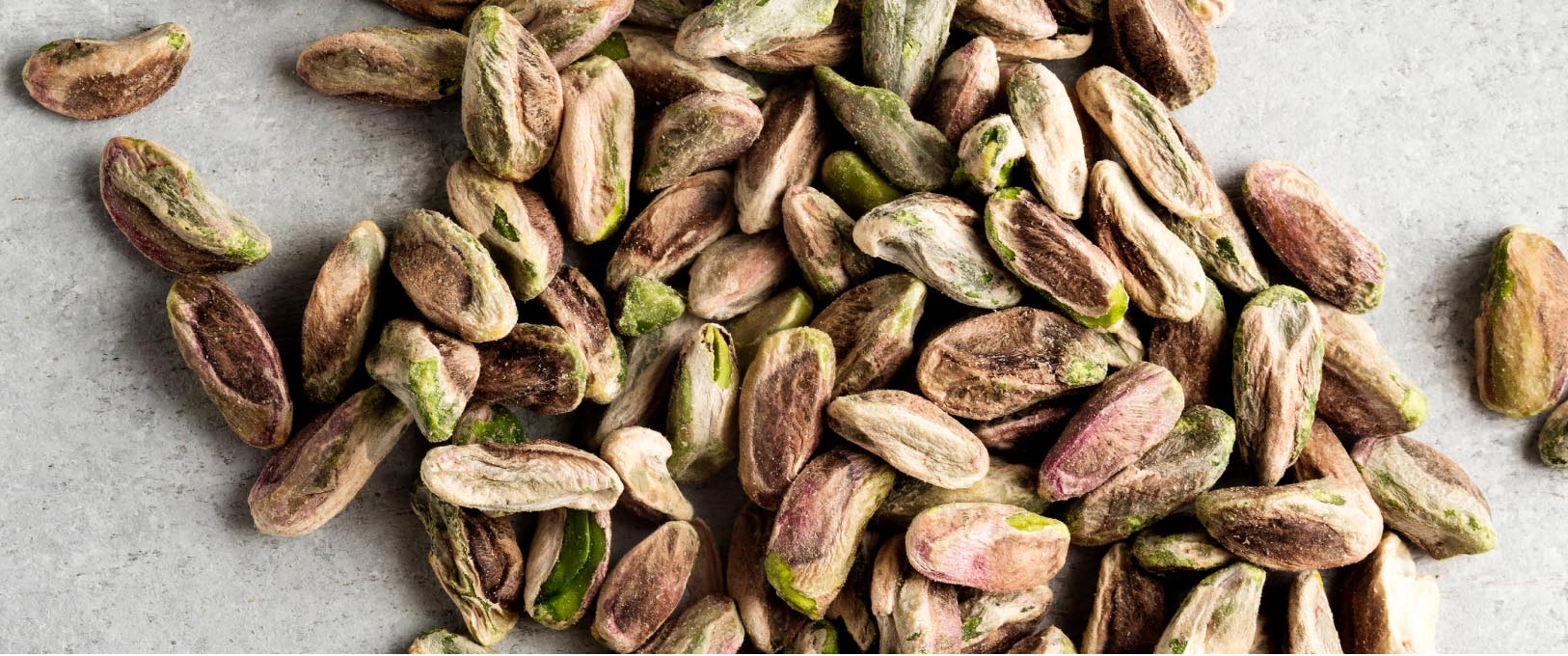Quick: what’s a colour, a nut, and is also technically a fruit? If you guessed Pistachio Nuts, then you’re correct.
Also known as the ‘smiling’ or ‘happy nut’ due to the hard casing forming a smiling face when it is split open, pistachios have been enjoyed by many different cultures since 7000BC. In fact, it was even mentioned in the Bible and was an indispensable form of nourishment for early travelers who used the ancient Silk Road trade route that linked China to the West.
But there’s more to this nut than their smile. Not only do they contain high nutritional value, but they are extremely versatile as they can be incorporated into a number of sweet and savoury recipes.
Ready to find out more about the green pistachio nut?
Pistachio Nuts – Across The Globe
Native to Western Asia and Asia Minor, archaeology suggests that pistachios were a common food as early as 6750 BC. The seed was then introduced into Italy around 35 AD. For a long time, the pistachio remained unknown to the rest of the world, until the 1880’s when imported pistachios became popular in the United States of America and Canada due to the arrival of Middle Eastern immigrants.
Once it was discovered that California offered the perfect growing conditions for pistachios due to its fertile soil and hot and dry climate, it was cultivated commercially in the Western world, and eventually was brought to Australia.
In Australia alone, we consume on average 3500 tonnes of pistachios per year. However, we only harvest an average of 1800 tonnes, which means that a good portion of our supply is imported from other countries, such as the US, China, Turkey, Syria and Iran. This is because they are cultivated best in extreme temperatures, such as the coldest winters and the hottest summers.
In 2017, the world production of pistachios neared 1.1 million tonnes. Pistachios are so popular that there’s even an International Pistachio Day (mark it on your calendars for February 26!)




